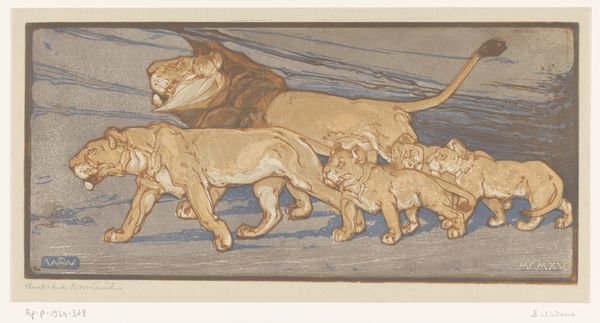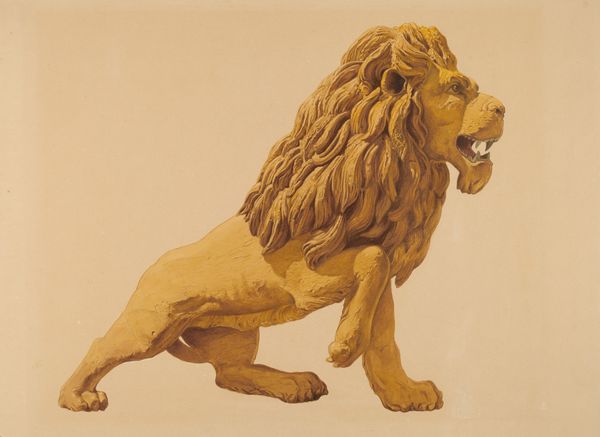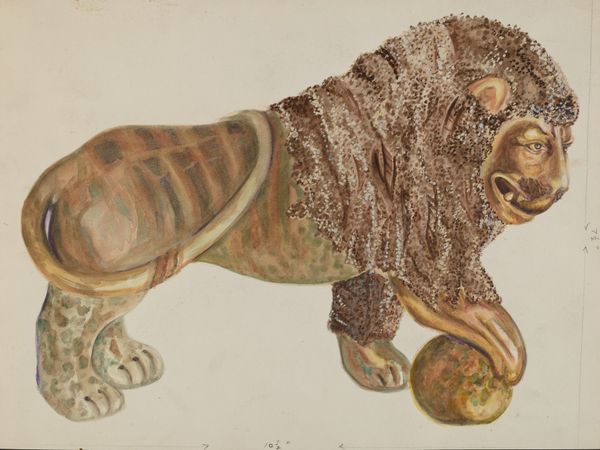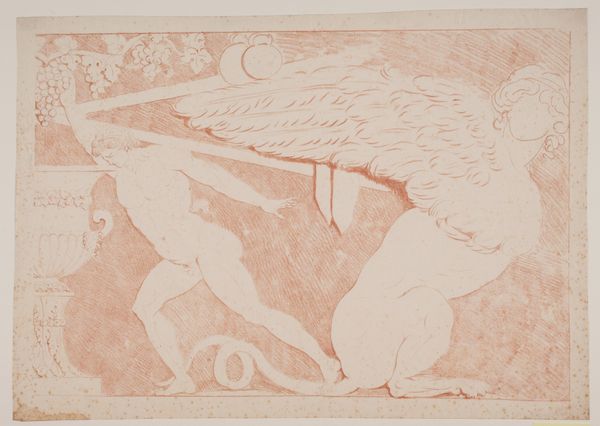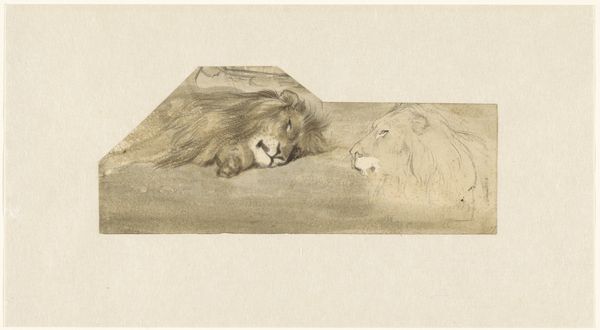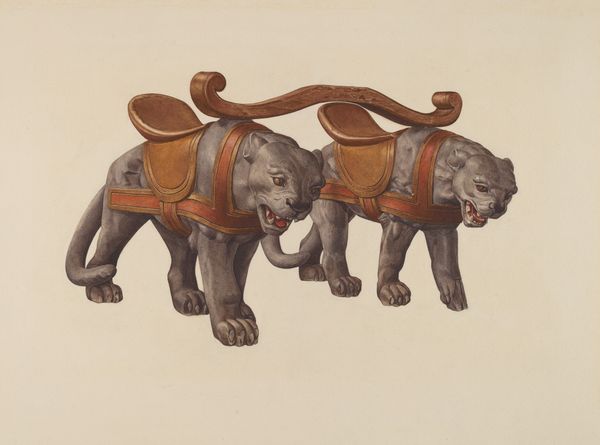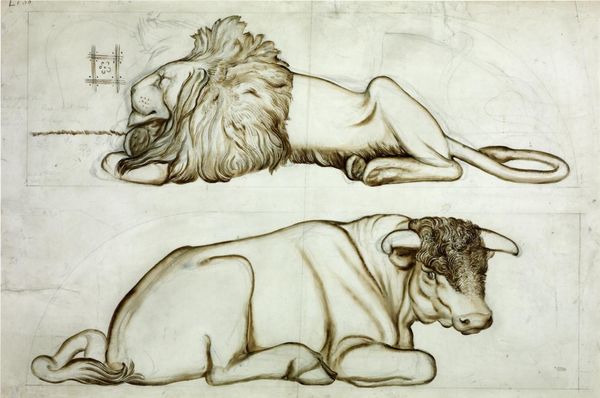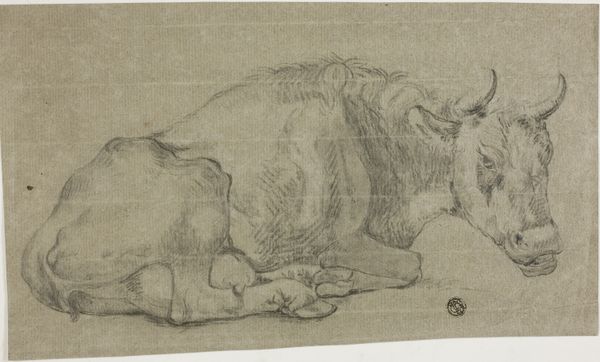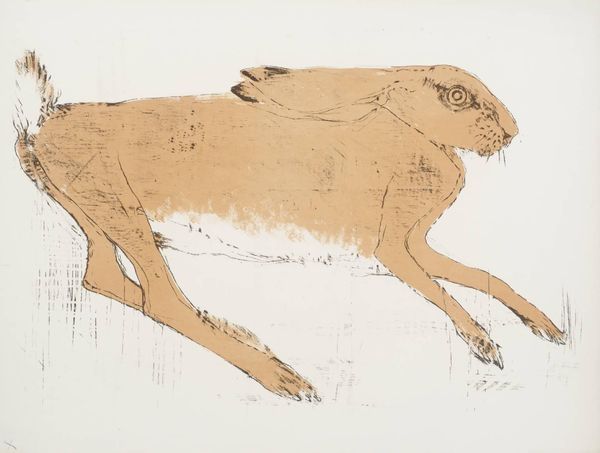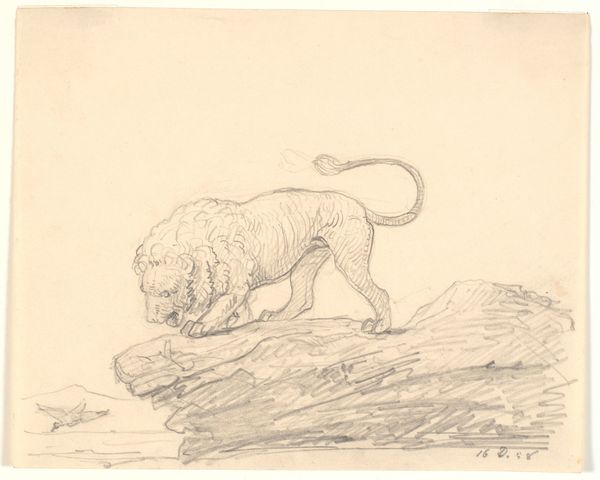
drawing, watercolor
#
drawing
#
animal
#
landscape
#
charcoal drawing
#
figuration
#
watercolor
#
realism
Dimensions: overall: 31.9 x 45.4 cm (12 9/16 x 17 7/8 in.) Original IAD Object: 14 1/2" long; 7 3/8" high
Copyright: National Gallery of Art: CC0 1.0
Curator: What a powerful presence this work has! Editor: Indeed. What immediately strikes me is the stillness, a deceptive calm. It feels poised for something, monumental and watchful. Curator: That's precisely the quality I observe as well. The piece before us, entitled "Buffalo," dates to around 1939 and comes to us from the hand of Robert Gilson. It’s executed using watercolor and charcoal on paper, and offers a really remarkable realism married with a more stylized sensibility. The way that Gilson suggests carved details through layering creates some fascinating visual texture. Editor: I find myself thinking about the mythology that the animal holds—both culturally and artistically. Buffalos or bisons represent provision, resilience, abundance in a spiritual sense. Seeing a powerful symbol rendered through this medium of the 20th century is a comment, a question perhaps of where this animal lives in contemporary cultural identity. Curator: Yes, that's an astute reading. In Indigenous cultures, the buffalo is central to the plains way of life, and seeing it portrayed with such veneration during the lead-up to World War II prompts questions about American identity during times of struggle. Gilson doesn't depict the animal in its natural environment— the neutral background pushes the focus squarely onto the figure. Editor: This treatment underscores how much our understanding of “nature” is mediated through cultural values. A work like this can serve to remind viewers how ideas about wilderness and wildlife are not necessarily intrinsic but actively constructed and always present a point of view. Curator: It also shows the cultural fascination, indeed romanticism with these majestic beasts, even while they were already endangered at that time. There is some tension. It encourages the viewer to recognize that there is more to these cultural emblems than surface level symbolism and nationalistic identity. Editor: Absolutely. A work of art allows viewers to engage critically, reevaluating established assumptions and received histories through the filter of aesthetic experience. Curator: And with "Buffalo," Gilson manages to ignite that spark, prompting viewers to consider not just the symbolic weight of the animal but also its evolving role in American cultural identity. Editor: Yes, the artist truly provides us with the opportunity to engage in the sort of inquiry about nature, representation, and culture that still proves fruitful.
Comments
No comments
Be the first to comment and join the conversation on the ultimate creative platform.
